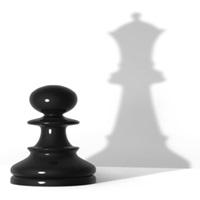
Changing of the Seasons
When I was new to chess, I had several fantasy scenarios of dramatic brilliancies in tournament games. Of course there was the standard "sacrifice everything for checkmate;" but also I had an unusual one - a long combination leading to all the pieces cleared off the board, leaving only a minimal - but decisive - advantage in the king and pawn ending.
In this article, I will be discussing the transition to the king and pawn ending. This is the final transition in a chess game (besides the possibility of the players each queening pawns and returning to a queen and pawn ending), and requires the utmost attention. You cannot casually go into a king and pawn ending! Ironically, as a game of chess simplifies, the necessity to "get it right" increases. King and pawn endings can, more often than not, be assessed with 100% certainty and played perfectly even by weak players.
This is one of the ironies of chess - the "easier" things are, the harder they become. The simpler the position, the higher the requirement for correct evaluation and perfect play.
In transitioning to a king and pawn ending, assumptions are the enemy:
Here is another example of why transitioning to a king and pawn ending requires more precise calculation than usual.
That fantasy scenario - an intricate tactical sequence leading to a winning king and pawn ending - was played out in a study-like ending. According to Nikolay Grigoriev, this beautiful ending took place in a simul which he played:

The trebuchet is a kind of catapult used in medieval sieges. The term is used in chess to describe a scenario like the following:

In one of my own games, I managed to transfer an ending with rooks and bishops straight into a trebuchet scenario, and the fancifully-named pawn ending made its appearance on the board after a tempo-battle.
RELATED STUDY MATERIAL
- Read about other King and Pawn stratagies here;
- Watch IM Daniel Rensch's video King and Pawn Endings: The Basics;
- Practice opposing and outflanking your opponent's king on Chess Mentor.






